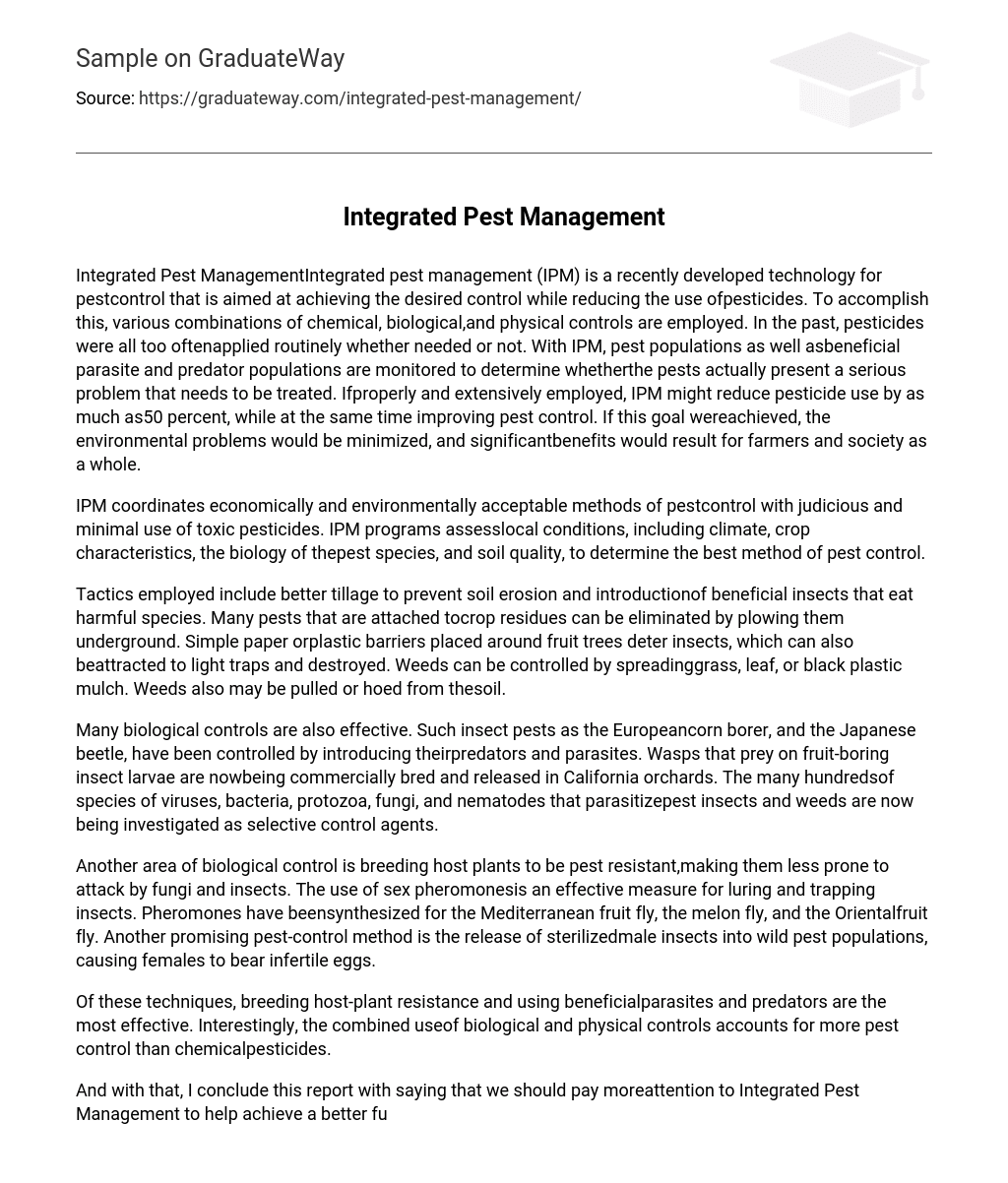Integrated Pest ManagementIntegrated pest management (IPM) is a recently developed technology for pestcontrol that is aimed at achieving the desired control while reducing the use ofpesticides. To accomplish this, various combinations of chemical, biological,and physical controls are employed. In the past, pesticides were all too oftenapplied routinely whether needed or not. With IPM, pest populations as well asbeneficial parasite and predator populations are monitored to determine whetherthe pests actually present a serious problem that needs to be treated. Ifproperly and extensively employed, IPM might reduce pesticide use by as much as50 percent, while at the same time improving pest control. If this goal wereachieved, the environmental problems would be minimized, and significantbenefits would result for farmers and society as a whole.
IPM coordinates economically and environmentally acceptable methods of pestcontrol with judicious and minimal use of toxic pesticides. IPM programs assesslocal conditions, including climate, crop characteristics, the biology of thepest species, and soil quality, to determine the best method of pest control. Tactics employed include better tillage to prevent soil erosion and introductionof beneficial insects that eat harmful species. Many pests that are attached tocrop residues can be eliminated by plowing them underground. Simple paper orplastic barriers placed around fruit trees deter insects, which can also beattracted to light traps and destroyed. Weeds can be controlled by spreadinggrass, leaf, or black plastic mulch. Weeds also may be pulled or hoed from thesoil.
Many biological controls are also effective. Such insect pests as the Europeancorn borer, and the Japanese beetle, have been controlled by introducing theirpredators and parasites. Wasps that prey on fruit-boring insect larvae are nowbeing commercially bred and released in California orchards. The many hundredsof species of viruses, bacteria, protozoa, fungi, and nematodes that parasitizepest insects and weeds are now being investigated as selective control agents. Another area of biological control is breeding host plants to be pest resistant,making them less prone to attack by fungi and insects.
The use of sex pheromonesis an effective measure for luring and trapping insects. Pheromones have beensynthesized for the Mediterranean fruit fly, the melon fly, and the Orientalfruit fly. Another promising pest-control method is the release of sterilizedmale insects into wild pest populations, causing females to bear infertile eggs. Of these techniques, breeding host-plant resistance and using beneficialparasites and predators are the most effective. Interestingly, the combined useof biological and physical controls accounts for more pest control than chemicalpesticides. And with that, I conclude this report with saying that we should pay moreattention to Integrated Pest Management to help achieve a better future for ourgeneration and the next generation to come.





